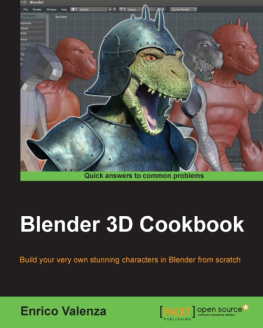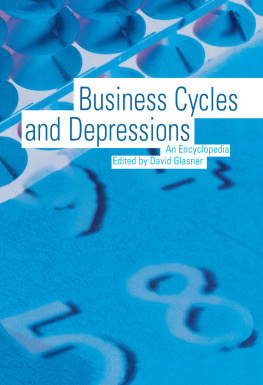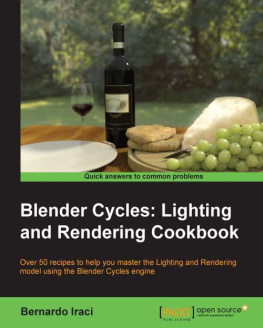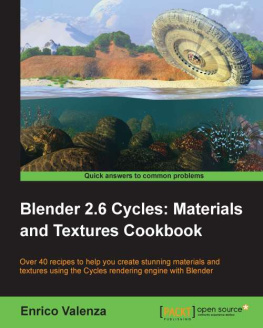Table of Contents
Landmarks
Glossary
Path Tracer: This is a term used for a physically correct renderer. It stands for calculations that actually trace the path a light photon would take through a scene as opposed to scanline renderers. Cycles is a path tracer.
Shading point : This is the smallest distinguishable point on a surface. It is somewhat similar to a pixel, but on the surface of an object in 3D space, not on a flat image. Wherever a single ray hits an object, this spot is considered a shading point.
Shader : A mathematical function that describes how light will behave when interacting with an object.
Incident ray : You could also call this incoming ray. In shading, this is any ray that hits an object.
Global illumination : An object in a white room will be illuminated much more than an object in a dark room with the same light sources. This is due to light bouncing off diffuse surfaces thereby lighting the object by indirect soft light. BI renderer was not able to correctly calculate GI, therefore Cycles renderings tend to look more vivid.
Ambient Occlusion: It is kind of the opposite of global illumination, but it leads to a similar effect. In GI objects close to each other will receive less bouncing light, AO creates a grayscale map to artificially darken those areas. Therefore it will not take colors of bouncing light into account. The result is similar to GI, but less accurate.
Light sampling : The process of gathering lighting information for shading points by sending shadow rays to random light sources.
Bokeh: Bright points are shaped like disks when out of focus. In photography those discs are called bokeh.
Frequency: In image processing the sequence of high and low values in an image. A gradient has a low frequency, an image of a grid a high one.
List of common abbreviations
BI | Blender Internal renderer. Before Cycles there was only BI available in Blender, which combines Rasterization with basic raytracing. |
BSDF | Bidirectional Scattering Distribution Function, basically a shader. |
BU | Blender Unit. This the edge length of a square in the Blender 3D viewport grid. In the default settings, one BU correlates with one meter in the real world. |
CG | Computer Graphics. |
CPU | Central Processing Unit. In this book this refers to whether Cycles uses the processor or the graphics card for rendering calculations. |
CUDA | Compute Unified Device Architecture |
DoF | Depth of field. If you take a picture of a close object, only what is exactly in focus will be sharp, the rest will be more blurry the further away it is from the focal plane. |
Fac | Factor. |
FoV | Field of View. It describes the angle of a hypothetical cone starting from your camera lens. Everything inside this cone can be seen in the picture. |
GI | Global illumination. The effect of light bouncing off diffuse surfaces and lighting other objects. |
GPU | Graphics Processing Unit. In this book it refers to whether Cycles uses the processor or the graphics card for rendering calculations. |
HDRi | High Dynamic Range image, an image that allows for colors brighter than white, often used to light scenes. |
HSV | Hue Saturation Value a color can be defined either by their mix of RGB or their combination of hue saturation and value (lightness). |
IOR | Index Of Refraction, how strongly light gets bent when passing through an optical medium. |
OSL | Open Shading Language |
RAM | Random Access Memory. Its the memory data for rapid calculations gets loaded in and may limit the amount of textures or hair you can use in your scene. |
RGB(A) | These values define a color. Red, Green, Blue and, if necessary, Alpha. |
SSS | Subsurface Scattering. A type of shader that simulates organic materials by scattering the light after it has penetrated the surface. |
UV | If not stated otherwise, these are the X and Y coordinates on a 2D image, they call them U and V instead of X and Y, so you don't mix them up with X and Y in 3D space. They can also mean along an object (U) and across an object (V). |
VFX | Visual Effects, this usually refers to 3D elements integrated into live action footage. |
More Products by BlenderDiplom
The Cycles Encyclopedia is not the only product available on BlenderDiplom.com - you should also check out:
Point Density Magical FX
Point Density Textures in Cycles open up a whole new world of magical effects. This training series by Blender Foundation Certified Trainer Gottfried Hofmann lets YOU enter this world as well. He demonstrates to you in-depth how to use Point Density features, so you can benefit from this new addition. The series includes four templates that let you create stunning FX in no-time.

Example of the Flaming Hull template | 
Example of the Basic Magic template |
You can chose between two options: Video training only or video training plus ready to use templates, example files and PDF documentation. The templates are licensed to be used freely for any purpose, commercial as well as non-commercial.

Example of the Ocean of Spheres template | 
Example of the Smokey template |
You can find out more about Point Density Magical FX on BlenderDiplom.com !
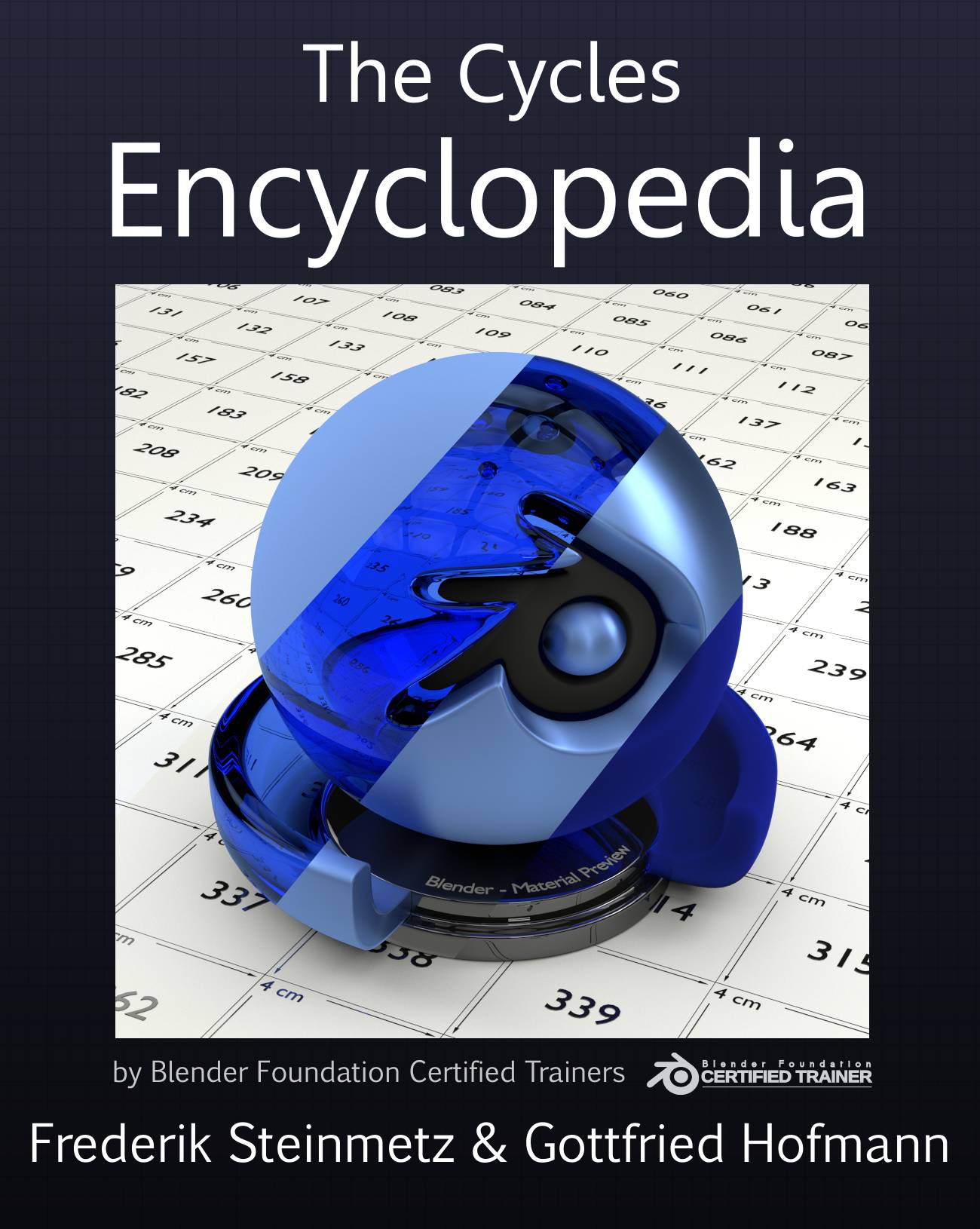
The Cycles Encyclopedia
Your Guide to Everything Cycles
Version 1.4
by Frederik Steinmetz & Gottfried Hofmann
Dedication
This book is dedicated to all the brave developers of Cycles who brought us the best open source render engine in the world.
And especially to Lukas Stockner, who never got tired of answering our questions as well as Ton Roosendaal for coordinating the ongoing effort that is Blender.
About the authors

Frederik Steinmetz is a true cosmopolitan who has lived in five countries to date. His interest in animals of all kinds even led him into the Philippine rain forest, where he did research for his graduation in Biology for four months. He's now living in Berlin, where - among other things - he teaches Blender at schools.






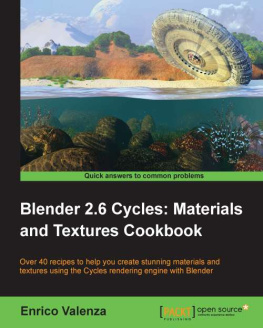
![Oliver Villar [Oliver Villar] - Learning Blender: A Hands-On Guide to Creating 3D Animated Character= s, Second Edition](/uploads/posts/book/124038/thumbs/oliver-villar-oliver-villar-learning-blender-a.jpg)
